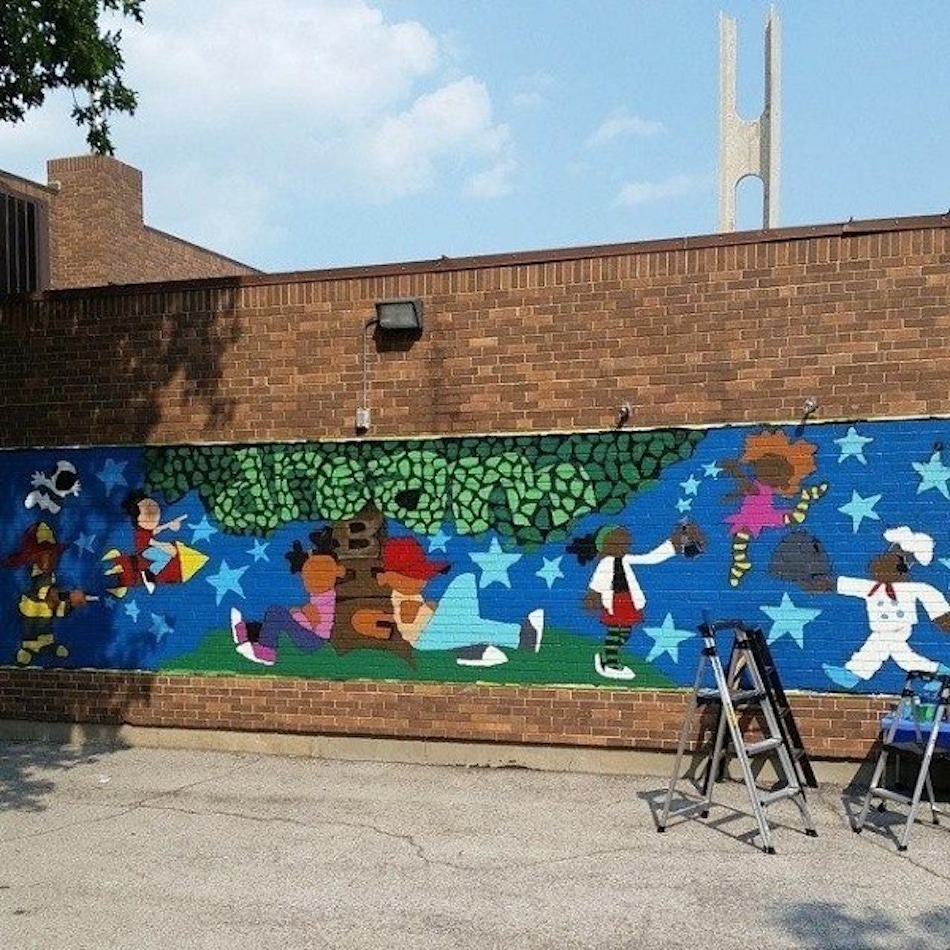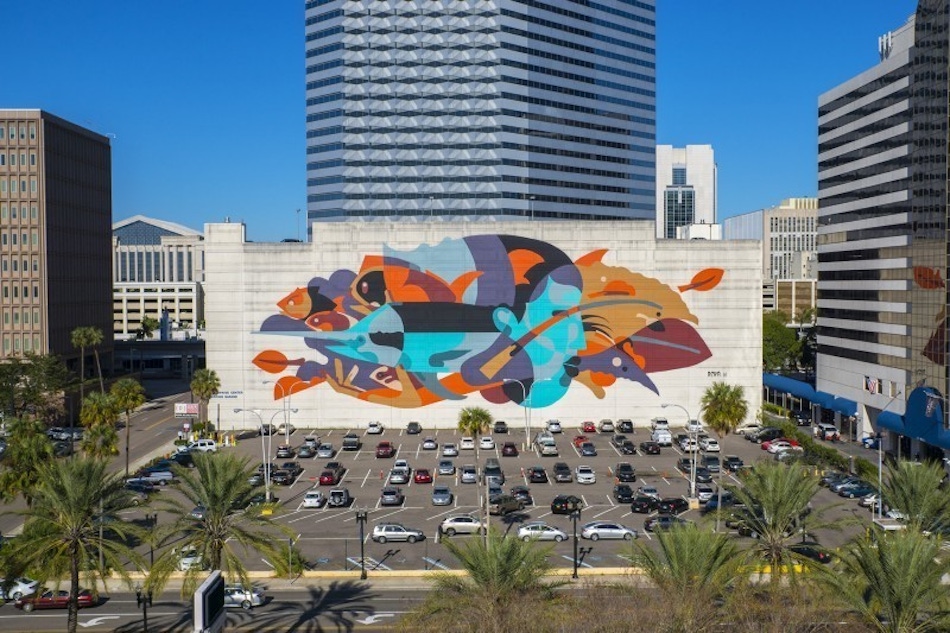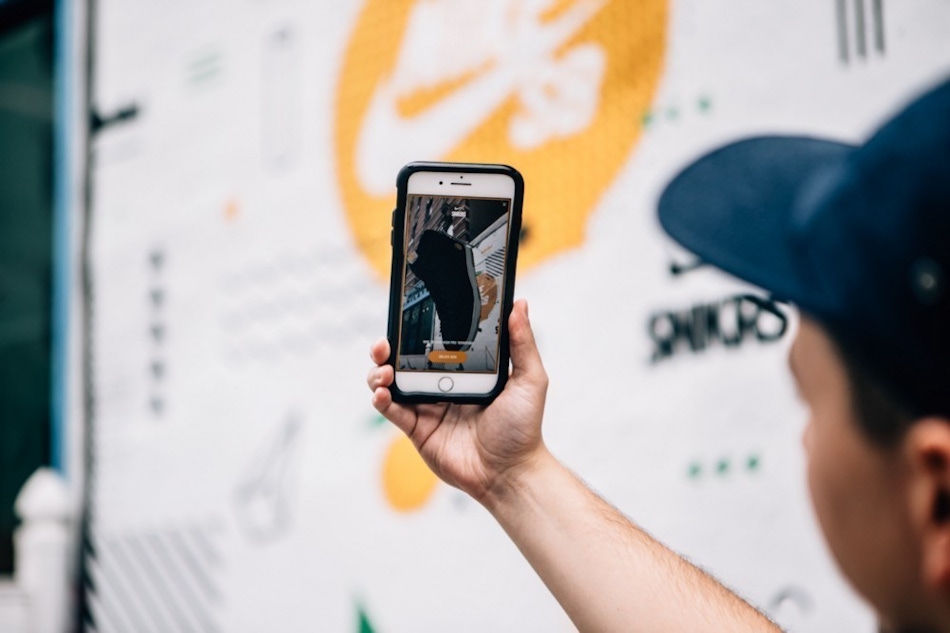
Public art has become a major force on both public and commercial urban projects. With the rise of VR/AR in recent years, how can the two be combined to create valuable new experiences for users?

Public art has become a major force on both public and commercial urban projects. With the rise of VR/AR in recent years, how can the two be combined to create valuable new experiences for users?
Public art dates back to the rise of cities themselves. Early Greek and Roman cities would erect statues embodying shared religious and social values, instilling a shared sense of community within its citizens.
More recently, in the 20th century, the form and function of public art widened substantially. The power of public art was used both as a tool for social-good, and at times as a way to spread dangerous propaganda.
Over the past several decades the rise and acceptance of graffiti and street-art has democratized public art, perhaps most notably giving a voice to those without a formal means to power.
Now, in the 21st century, public art is common-place. Art is used in public and commercial spaces as a way for people to communicate, express themselves, and connect with their fellow citizens. In short, art brings people together.
In the public realm, art brings tremendous benefits to the community. Beyond simply providing a visually pleasing aesthetic, public art creates a sense of community and can serve as a piece of inspiration for residents.
Jane Golden, Executive Director for Cincinnati-based ArtWorks says:
Cbabi Bayoc, a St. Louis-based artist, was commissioned to create several murals in local St. Louis neighborhoods. He notes how murals create a sense of inspiration in their community.
Bayoc’s Kingdom Hall mural was created to instill the idea of “Dream Big” into children of the community. The mural itself depicts the possibilities of what they can become: a dancer, a scientist, a chef, an astronaut.

In addition to inspiring individuals, art has the power to revitalize communities themselves.
Peat Wollaeger, another St. Louis-based artist, has contributed to various mural projects across the country. He speaks on how murals themselves become destinations for people interact and engage with one another.
Speaking about his work in local Miami neighborhoods:
“There are probably 200 different murals in that neighborhood, and it’s now a massive hot spot. Everybody goes there to be around this crazy, awesome public art.”
In addition to directly serving the public’s interest, murals can be greatly beneficial to commercial projects. Smart developers and architects are working with artists to incorporate curated public art into the overall function of their space.
When done well, public art gives the developer the ability to create an experience that attracts business, inspires consumers, and maintains tenants.
Cody Hundertmark, Vice President of CBRE notes;

Across the world developers are incorporating public art into projects to enhance the overall experience delivered and to attract a changing demographic of tenant.
Doug Holte, President of Irvine Company Office Properties, notes how Millennials have the expectation for their work and home to be visually stimulating and authentic. So much so that Irvine Company has an in-house planning and design team to assist with these types of projects on their properties.
It’s safe to say that public art can be added to the list of amenities now in high demand from tenants.
In the world of technology, Virtual Reality and Augmented Reality (VR/AR) are being championed as the next game-changing innovation coming out of Silicon Valley.
Like self-driving cars, the idea itself seems far fetched, but in reality, using immersive digital environments in our daily lives is right around the corner. Already, businesses and entrepreneurs in the real estate, tourism, and entertainment space are using this technology to better connect with customers and increase brand value.
The potential of VR/AR comes from it’s ability to create a more seamless and rewarding experience for customers.The immersive quality it delivers creates a deeper emotional connection for users, and its capabilities provide endless ways to make information easier to understand.
Beyond the incredible experience VR/AR delivers, it has the ability to break down language and accessibility barriers. Traditionally, these types of communication challenges can be hard and expensive to fix, but VR/AR makes them possible at large scale.
As we’ve discussed, murals and public art have the ability to contribute greatly to both social and commercial projects. They provide a way for people to participle and express themselves within their community, and can create authenticity and buzz for a development project.
VR/AR creates the potential to compliment existing in-person experiences, with enhanced digital ones. Providing a new type of immersive experience that strengthens the storytelling of traditional 2D art.
The question we now ask is: how can the benefits brought by VR/AR be applied to murals and public art, as a way to enhance the positive qualities of these works?
Unsurprisingly, we’re not the only ones asking this question, and these types of projects are gaining traction across the globe.
Within the Roosevelt Row neighborhood of Phoenix, a new augmented mural project is in the works encouraging young people to vote. The project uses a public mural combined with an augmented AR experience which places people inside the mural and adds them into the storytelling experience.

“We wanted to come into their community and show them that by registering to vote, you can really take flight with your voice,” said Education Director Gina Roberts.
Benjamin Dveirin, a technologist on the project noted,
“The amazing thing about Augmented Reality is it allows you to do more storytelling, through the blend of technology and art”
On the commercial side, Nike is using AR-enabled posters as a way to connect with customers and promote commerce around shoe releases. The project placed poster art around New York City venues and had users move throughout the city, much like digital treasure hunt.
In this case, promoting commerce by encouraging urban exploration and in-person physical experiences. Something less common with society’s gradual shift to online only commerce.

In Detroit, local restaurants and hotels are sponsoring an AR mural project to create several pieces of art within local neighborhoods. A good example of both 2D and 3D public art being used as a way to build buzz and generate excitement in a community looking for growth.
With the growing appreciation for public art and the fast rise of technology including VR/AR, there’s no doubt we’ll continue to see collaboration between these two mediums.
It’s exciting to see the potential VR/AR has in creating enhanced immersive experiences that can be used to engage and inspire with local communities and a way to create attention and energy on a development project.
At Authentic F&F, we’re very excited about these possibilities and the impact they can make in the work we’re doing. We’re currently working on several AR-related projects, and will be sure to share the progress and success we’re seeing.
If you have any questions, or care to chat further about VR/AR in the urban space, don’t hesitate to reach out to me at bryant [at] authenticff.com. We routinely chat with folks interested in brining digital innovation into urban projects, which you can find more about on our website.
Subscribe here to get our short and sweet monthly newsletter!